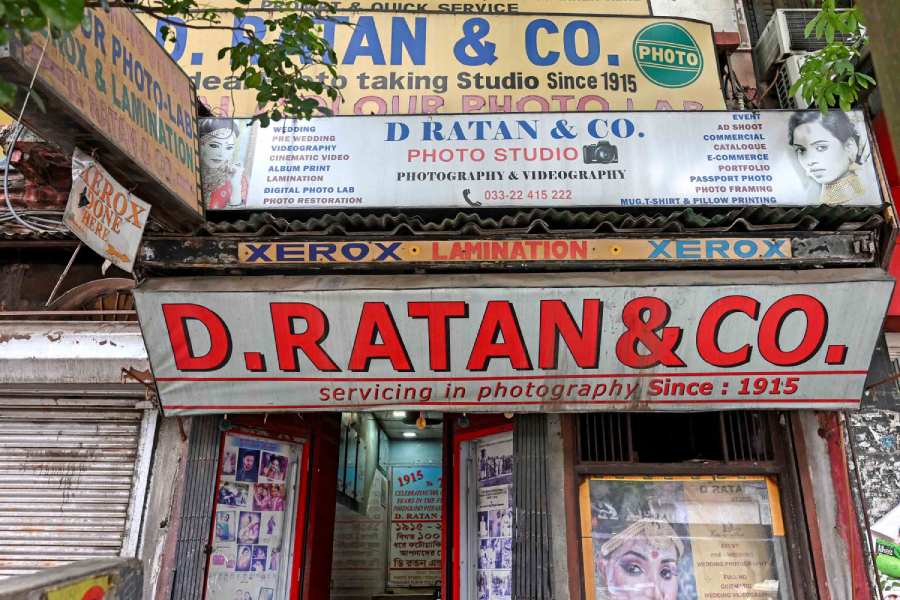A brief walk from Vivekananda Road Crossing on Bidhan Sarani, will take you to a quaint little photo studio that has its walls steeped in the stories of an India we know only through the pages of history books. To the present generation, D. Ratan & Co. might be an unfamiliar name, but long before the country gained Independence, it was a pioneering force that revolutionised the Indian photography scene with a unique lens capturing the spirit of the freedom struggle.
Established in 1915 by Ratan Krishna Dey, during the peak of the British period, the studio has now been running for 110 years, currently managed by the fourth generation of the founder. While other heritage studios from pre-Independent India like Bourne & Shepherd have long shuttered, brothers Rajkumar and Suman Kumar Dey leave no stone unturned to uphold the sanctity of their company that has been witness to India’s journey before and after Independence.
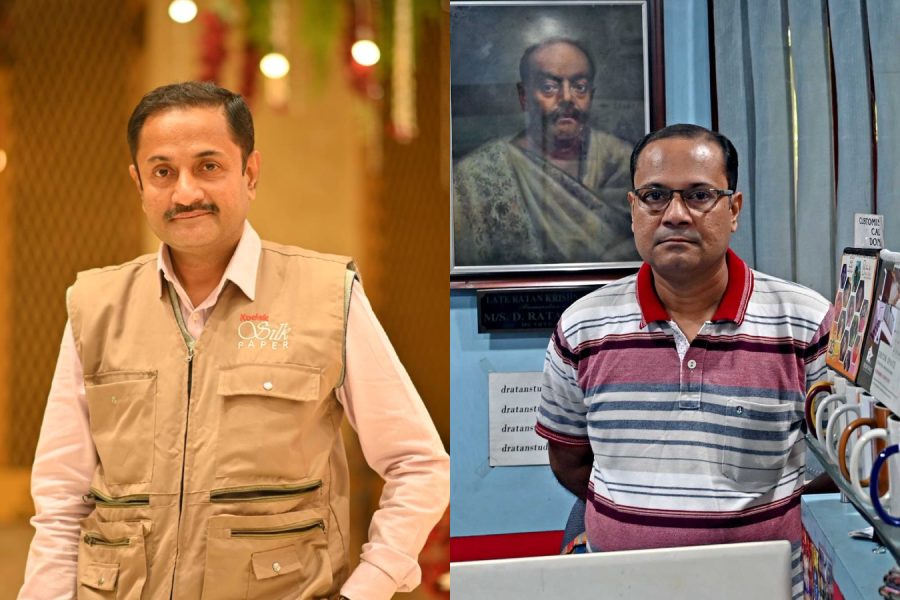
(L-R) Rajkumar Dey, Suman Kumar Dey
At a time when India’s fight for freedom was steadily gaining momentum, Ratan Krishna dreamt of starting a business that Bengalis hadn’t tread on before. “He wanted to build something unique. Bourne & Shepherd was the household name back then, but only the affluent could afford their services. What inspired him was the idea of a commercial photo studio accessible to the common people,” Rajkumar, who got into his family business in 1986, said, elaborating on the motivations behind the creation of the studio.
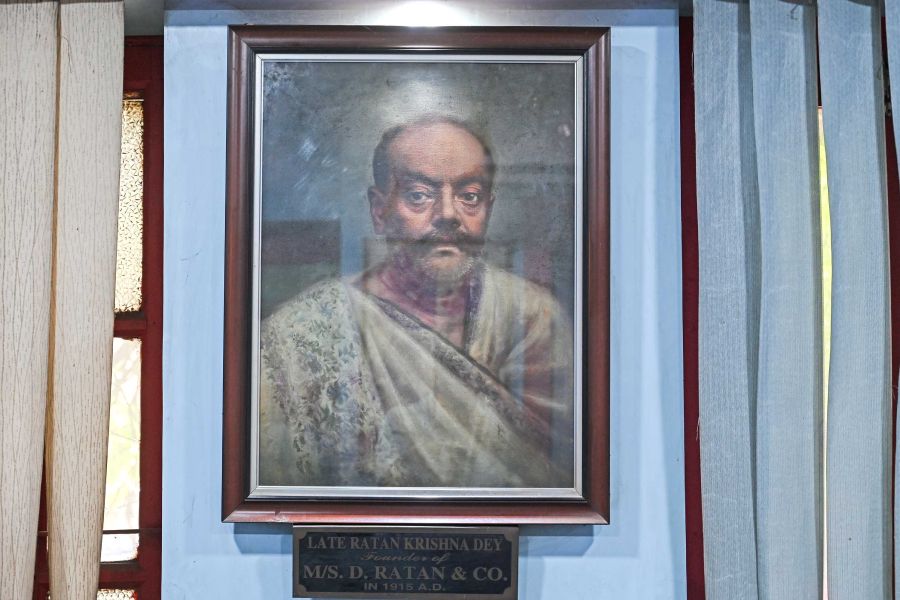
Ratan Krishna Dey
A quick glance of the old showcase outside and the walls of the studio on the second floor transports us to the bygone era of revolutions, political gatherings and a time when photo prints were a staple in every home. Rich with a scent of old photos and aging negatives, D. Ratan still stands tall today, despite having faced the brunt of the digital age.
In its earlier years, the company was helmed by three of Ratan Krishna Dey’s five sons — Charuchandra, Prafulla Kumar, and Laxmikant Dey. With unabated enthusiasm, Rajkumar fondly recounted the memories of his grandfathers, revealing that a majority of the era-defining political moments, including historic developments within the Indian National Congress, were captured by Charuchandra and Prafulla Kumar. Laxmikant, on the other hand, carved out his own path as an avid photojournalist in the 1950s and ’70s, documenting most of Mohun Bagan’s matches till 1972.
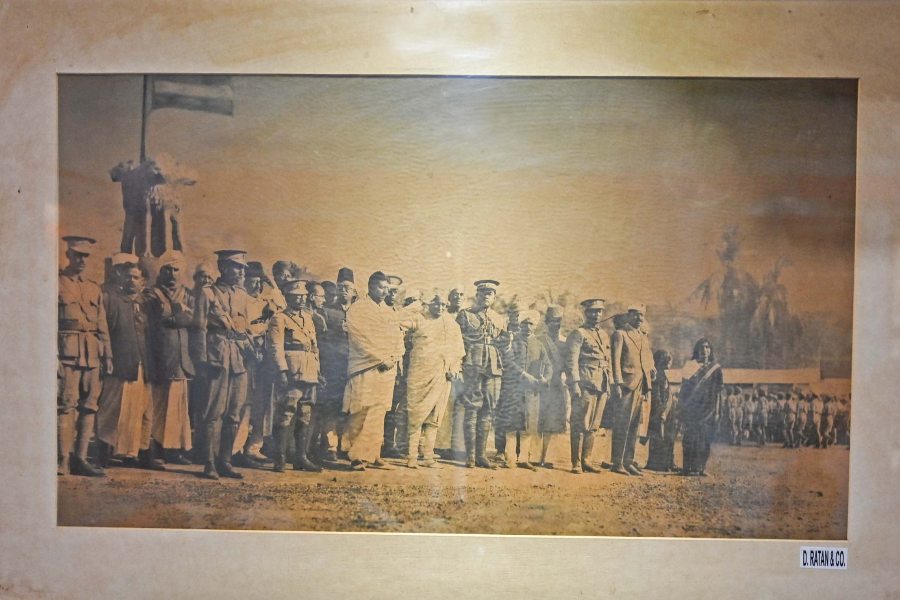
Netaji at Wellington Square on April 1939
Every contribution, big or small, counted during the fight for Independence, and D. Ratan & Co. did their part by photographing the revolts, rallies and meetings for newspapers to bring people closer to the graphic details. However, due to their unflinching reporting, the studio faced a ban briefly imposed by the British government during the 1920s and ’30s.
“Back then, the newspapers like Amrita Bazar Patrika and Jugantor did not have photojournalists. They used to source pictures from us and give our company’s name as the credit,” Rajkumar recalled. The pictures of police lathi-charges, and other brutalities were captured with an undaunted attitude by Rajkumar’s grandfathers, Prafulla Kumar and Charuchandra. “We never asked for any payment,” he added. “All we wanted was our company’s name at the bottom of the pictures.”
Carrying a heavy film camera on his back, Prafulla Kumar would attend freedom rallies to take pictures for various publications. At several places, he had been beaten up by the police, Rajkumar said, recalling incidents from the past.
Another event that is etched in the minds of both Rajkumar and Suman is the funeral procession of Rabindranath Tagore in August, 1941. Beaming with pride, the brothers painted a picture of the massive, chaotic event, where their studio had arranged for drinking water and hand fans despite the limitations of the time.
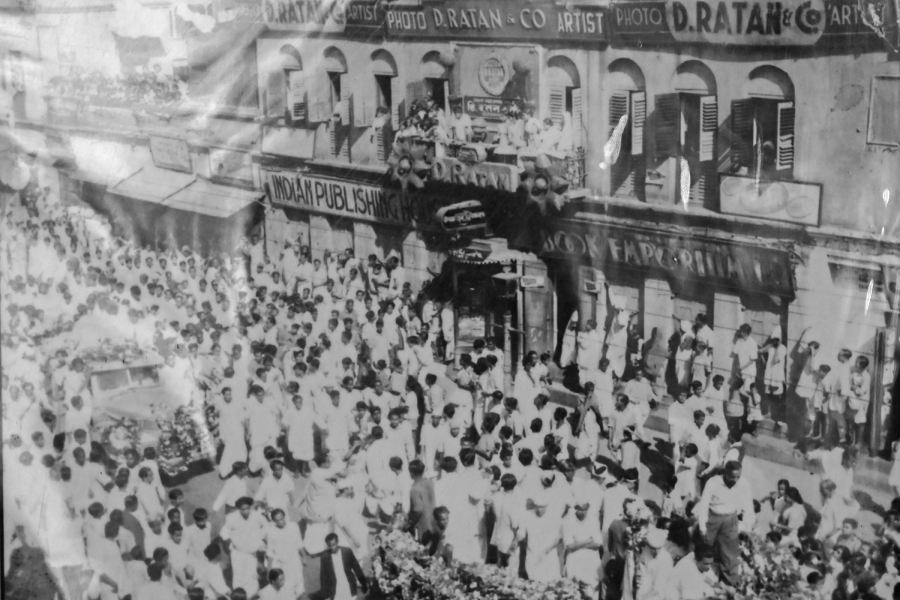
Funeral procession of Rabindranath Tagore in 1941
When India won its Independence in 1947, there was a grand celebration in front of the shop, Suman reminisced from the pictures he had grown up seeing. “People waved flags from the balcony opposite our studio, decorated the streets and assembled in large groups,” he said.
After 1947, the beloved studio became a trailblazer for the Bengali cinema world. From household names like Soumitra Chatterjee to Rabi Ghosh, Satyajit Ray to Uttam Kumar before he clinched the title of ‘Mahanayak’, D. Ratan & Co. emerged as a niche studio for both — film shooting and portrait photography.
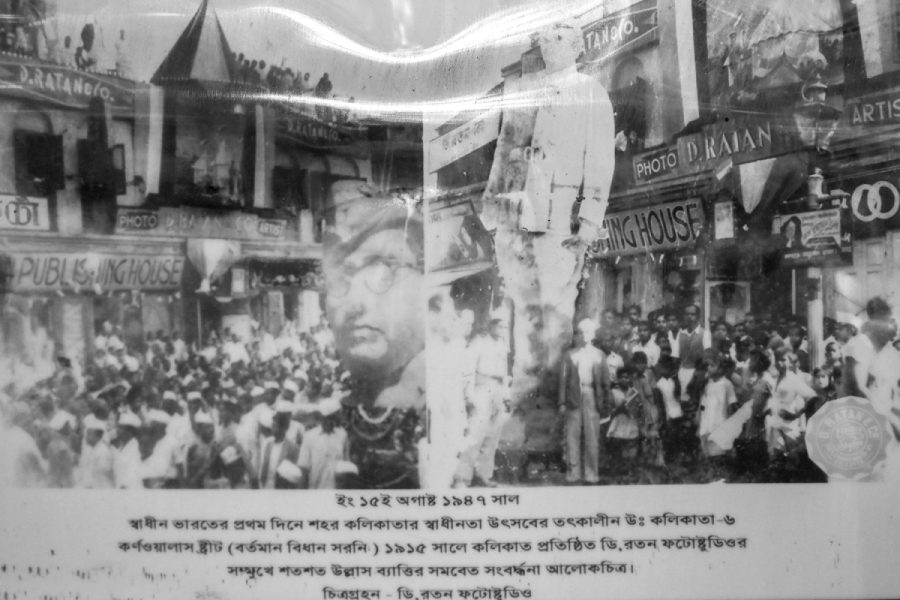
People gather in front of D. Ratan & Co. on Bidhan Sarani (previously named Cornwallis Street) to celebrate the first day of Independence
Apart from the archival pictures showcased inside the studio, several black-and-white family photos also adorn its walls. For many, the name D. Ratan instantly evokes nostalgia, especially among those who had once considered it as a trusted address for their important moments.
One such memory belongs to Subhash and Prabhati Chakraborty of Teghoria, who chose the studio for their very first photo as a married couple after their wedding in 1968.
Now in his eighties, Subhash looked back with a smile, “It was the go-to studio for common people at that time. We never thought of going anywhere else.” For Prabhati, the journey from their first rented house in Duttabagan to D. Ratan holds a special place, not just for their first outing together, but also for the care the staff took. She vividly remembers how one of the photographers, noticing her short height, stacked books for her to sit on to match Subhash’s frame. “It was one of the most memorable moments I can recall from our early days of marriage,” she said, her voice brimming with nostalgia.
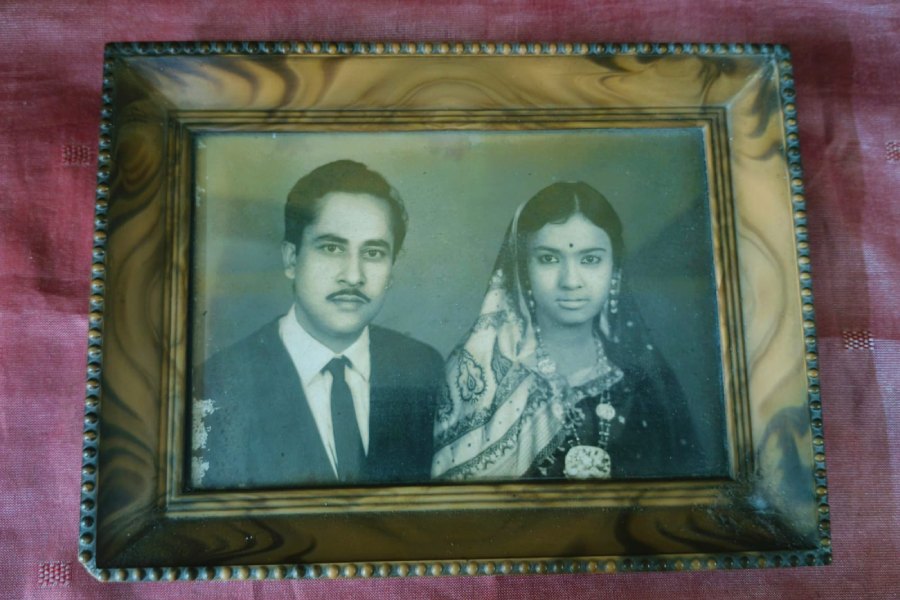
D. Ratan & Co. was a household name for previous generations
From glass negatives to film rolls, colour labs to the age of digital cameras, the photography industry has witnessed an immense transformation, albeit devastating. “As the mode of photography changed over the years, we had to upgrade ourselves to keep up with the times. When monochrome photos stopped, we started working with coloured ones. We opened a colour lab in the year 2000, and then adapted to digital photography in 2006,” Rajkumar said.
However, the trend of visiting studios to click photos and preserving print versions at home are things of the past now. “This is solely due to the invention of smartphones,” Rajkumar cited the reason behind the dwindling demand of photo studios. To shift gears, they began focussing on wedding, model and product photography.
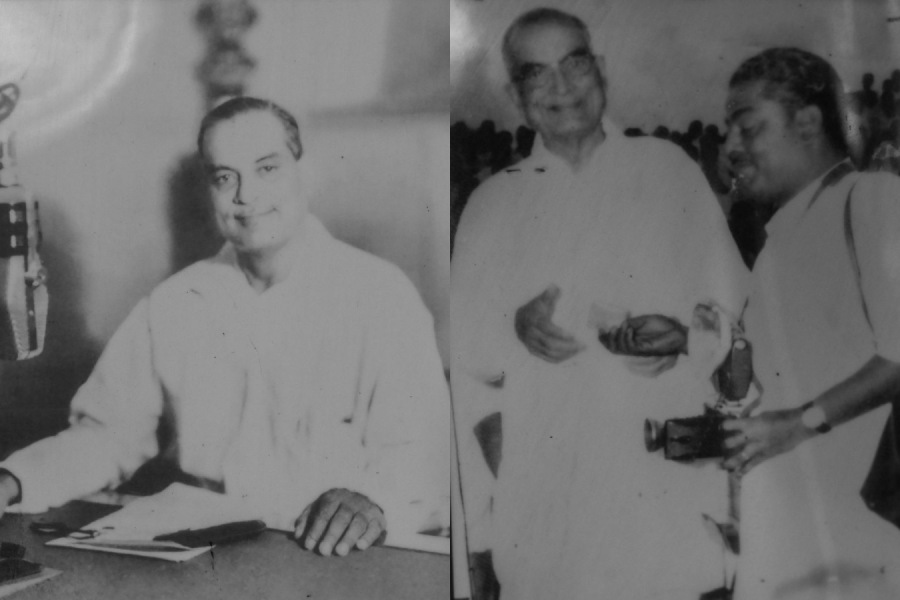
The first CM of West Bengal, Bidhan Chandra Roy, photographed by Laxmikant Dey on the day of his oath-taking after Independence at a radio station
Although the studio faced tremendous disruption in business during the internet age, it did not incur any significant losses right after Independence. “There were very limited studios at that time, so we did not face any impact. We started to suffer after the 1970s and ’80s when colour photography took over,” Rajkumar remarked.
Despite years of challenges and losing several priceless pictures, D. Ratan & Co. stands as a chronicler of India’s tumultuous journey. Now, the method of photography has changed, the streets of Bidhan Sarani have a different look, but the studio continues to keep history alive. As the country celebrates another year of Independence, the story of the Dey family reminds us that memories can outlast time despite decades of erosion.
